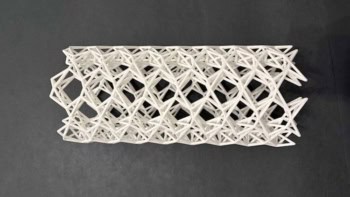
More than 200 beryllium ions have been entangled in a record-breaking experiment done by researchers at NIST in the US. The ions act as quantum bits (qubits) of information and could be used to simulate physical phenomena such as magnetism and superconductivity, which can be notoriously difficult to model using conventional computers. The entanglement technique, which involves 10 times as many ions as previous efforts, could be useful for developing better atomic clocks.
Understanding a complicated system such as a large molecule or a superconductor often involves using a computer to solve the Schrödinger equation for a number of interacting atoms and electrons. Finding solutions can be very challenging, particularly in the case of biological molecules, magnetism and high-temperature superconductors.
A quantum simulator addresses this problem by creating a model of the system of interest, using components that are themselves subject to the rules of quantum physics. Strongly interacting electrons in a solid, for example, can be represented using atoms held in an optical or magnetic trap. Interactions between atoms can be fine-tuned by applying a magnetic field or adjusting the laser light – allowing for systematic studies of how interactions affect the collective behaviour of the system. This is unlike electrons in a solid, where the interactions are a fixed material property.
Rotating disc
To create their quantum simulator, Justin Bohnet and colleagues at NIST trapped as many as 219 beryllium-9 ions in a Penning trap – which holds charged particles using electric and magnetic fields. The ions form a 2D disc just one ion thick and about 1 mm in diameter. The disc is rotating at a frequency of about 180 kHz.
Electrical repulsion between the positively charged ions causes them to self-organize into a triangular lattice. Each ion has a spin that can point up or down along the z-axis of the trap. The researchers shine laser light on the atoms, which creates an interaction between neighbouring spins that is dependent on their relative orientation (up or down). This “Ising” interaction is also found in some magnetic materials, which is why such systems are proving to be useful for the quantum simulation of magnetism.
The experiments begin with zero Ising interaction, which means that the ions act independently of each other. Then the interaction is turned on, which causes the ions to form an entangled state that includes most, or all, of the trapped ions. Entanglement is a purely quantum-mechanical property that allows quantum objects such as ions to have a much closer relationship than is predicted by classical physics.
Spin depolarization
A microwave pulse is then fired at the trap, which rotates the spins by 90° so they all point in the x direction in the plane of the disc. The spins are then left for about one millisecond, and during this time, the Ising interaction causes the spins to begin to point in different directions – a process called depolarization.
Finally, the degree of depolarization that has occurred is measured by shining laser light on the trap. Spin-up ions will emit fluorescent light and spin-down ions emit no light. The components of spin in the plane of the disc (the x–y) can also be measured by firing a microwave pulse at the ions to rotate their spins into the z-axis.
The team was able to show that the depolarization was occurring in a quantum-coherent manner and was the result of interactions between spins, rather than noise. This is important, because the presence of large amounts of noise in the system would suggest that the ions were not entangled, but rather behaving independently.
The team then looked closely at the quantum fluctuations in the system and was able to show that the entangled states they created were “spin-squeezed states”. This means that the quantum uncertainty in the measurement of the combined spin of the ensemble is reduced. To satisfy the uncertainty principle of quantum mechanics, this uncertainty is transferred to (or squeezed into) other degrees of freedom of the system.
Bohnet describes the results as “clear, indisputable proof the ions are entangled”. “Here, spin squeezing confirms the simulator is working correctly, because it produces the quantum fluctuations we are looking for,” he adds.
This ability to transfer uncertainty could prove to be very useful in the development of atomic clocks. “The reduction in the quantum noise is what makes this form of entanglement useful for enhancing ion and atomic clocks,” explains Bohnet.
Ben Lanyon of the Institute for Quantum Optics and Quantum Information of the Austrian Academy of Sciences told physicsworld.com that “the observation of entanglement in systems of hundreds of trapped ions is certainly a big step forward for the field of quantum simulation and quantum science in general”. He points out that the ability to work with large numbers of entangled particles is crucial in the development of powerful quantum simulators. “It’s particularly exciting that this has been done with ions, which can be precisely controlled one by one: allowing essentially any property of the system to be studied,” he says. He adds that “Bohnet’s system is 2D, where many of the most interesting and otherwise difficult to solve problems in quantum many-body physics lie.”
The quantum simulator is described in Science.



